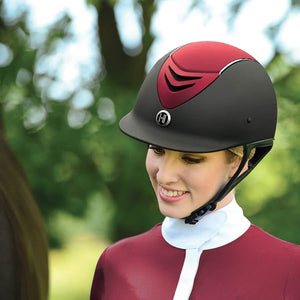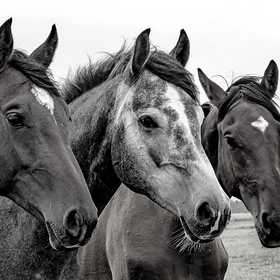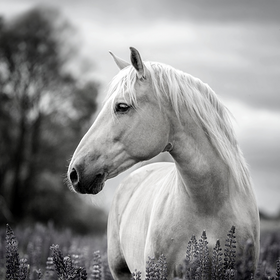
Horse Lunging 101 - How to Lunge Your Horse
What is Lunging & Why do it?
The horse moves around you in a circle at the end of a lunge line (very long line) as they are being lunged. There are many different reasons to lunge horses including: burning off energy before a ride, developing strength, balance, and flexibility without a rider, improve the rhythm or cadence of each gait, and detecting lameness. Lunging takes patience and time to master, but in this case, practice really does make a difference.
Lunging Supplies
There are a few different methods of lunging that require various additional equipment, but the basic equipment will remain the same.
- Lunge Line: Most lunge lines are roughly 35 feet long and are made from rope or webbing. The webbing tends to be easier to handle because it’s a bit lighter than the rope and lays flat in your hand.
- Halter: You can use a regular halter or a rope halter for lunging. A rope halter is recommended if your horse tends to pull as this will give them less to lean on while lunging.
- Lunge Whip: Lunge whips come in all sorts of fun colors, but be sure to pick a darker color if your horse is very sensitive to whips.
- Exercise boots or polo wraps: These help protect your horse’s legs during the lunge session.
- Gloves: We highly recommend lunging with gloves as they will prevent rope burn if your horse spooks and pulls the rope.
- Boots: This is a given for most equestrians, but worth mentioning. Whenever you handle your horse, make sure to wear sturdy boots to protect your feet.
How to Lunge
With your horse in a halter and lunge line, walk into the arena or round pen and stop your horse where you’d like them start the circle. Then, you walk to the center of the circle. If your horse is traveling clockwise, hold the lunge line in your right hand and your lunge whip in your left. When you switch directions you will switch hands, as well.
As you are holding the line and whip, visualize a triangle with you at the top, the whip down one side, the line down the other, and your horse at the bottom. Always keep your lunge whip behind your horse’s mid-line to encourage forward movement.
Ask your horse to move forward by saying “walk on” or “walk”. You can use the whip for encouragement if they do not move forward promptly. Be sure to maintain the circle as your horse travels around.
Once you have mastered the circle and walking, consider adding up and down transitions. Using the same technique as the walk, ask your horse for an upward transition from their current gait. Up and down transitions are a great way to build muscle and stamina for your horse. For downward transitions, lower your whip and speak slowly and calmly as you ask for the lower gait. When you ask for a halt, it is important that your horse stops and waits for you to approach. This helps to prevent the lunge line from getting tangled.
Most horses can be lunged for about 30 minutes, and up to 4 times per week depending on their other activities.





